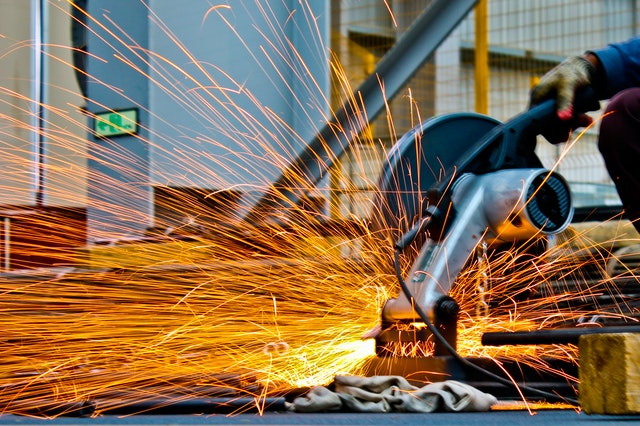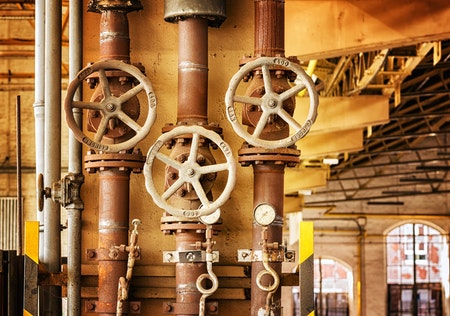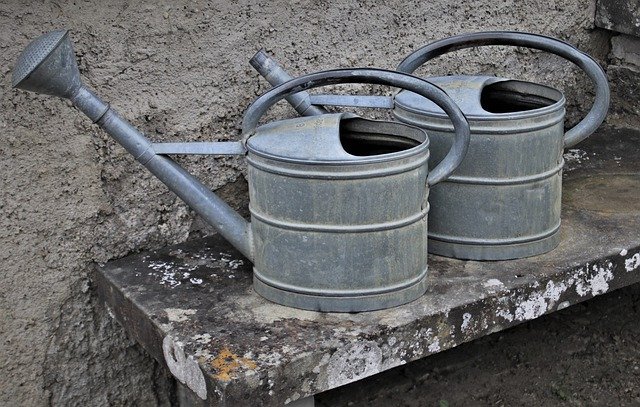3 Relevant Uses for Galvanized Steel and 4 Benefits of Galvanizing

Galvanized steel is one of the most popular steel types due to its durability and corrosion protection, making it applicable in a wide range of industries and projects. Below is a comprehensive overview of the key benefits of and uses for galvanized steel.
Galvanization or galvanizing refers to the manufacturing process of applying a zinc coating to steel or iron to provide long-lasting protection. The purpose of the zinc coating is to prevent corrosive elements from reaching the steel underneath and thus prevent the formation of rust.
4 Benefits You Can’t Afford to Ignore
The use of galvanization for steel protection offers several major, measurable benefits. The 4 most important of these are detailed below:
Economical Choice Compared to Other Coatings
Galvanized steel is cost-effective, especially when compared to stainless steel. It is the least expensive choice of treated metal in the market. Hot-dip galvanizing, which is the most common galvanizing method, is relatively inexpensive and fast, thus saving costs in labor hours.
Compared to other forms of coating, galvanization is preferable since the raw materials are readily available and the process is relatively simple and affordable. Galvanized steel is also a great economical choice in the long run. Since the material’s durability and corrosion resistance ensures it lasts for many years, there’s a longer time period between replacement and repairs.
The low maintenance requirements of galvanized steel also factor in its overall cost efficiency. If you utilize it for your operations, you benefit by spending less money purchasing coating materials.
Hygienic for Food Applications
The galvanization process does not produce any Volatile Organic Compounds (VOCs) that are known to affect human health. This means that galvanized steel is an excellent material option for food applications. It is perfectly safe for most foods to be in contact with zinc.
According to The Food and Drug Association (FDA), you can use galvanized steel for food contact surfaces of equipment and utensils. The only exception is foods with a high acid content, which may react with the zinc coating and accelerate corrosion. Many food production and processing plants demonstrate widespread utilization of it throughout the plants.
Galvanized steel is also used as a countertop coating in numerous restaurants and bars. The material is also widely used in structural components that are essential for food production and processing, including racks, trays, refrigerators, freezers, and conveyors.
Galvanized steel functions well in food applications largely because the infrastructure is located indoors and sheltered from normal elemental exposures. These sheltered conditions facilitate an optimal lifespan. As such, galvanized steel is an effective and safe way to offer corrosion protection in places where there is food.
Durable and Rust Resistant
Galvanized steel is far more durable than mill-finished or bare steel or iron, for example. The galvanization process provides a strong layer that significantly increases the lifespan of the metal, especially in outdoor environments. Also, these materials provide better impact resistance.

Galvanization can provide between 50 to 75 years of protection for steel in most environments. The sacrificial anode from the zinc coating offers additional protection even when the steel is completely exposed. The surrounding zinc corrodes first and creates a sacrificial protection layer on the exposed areas.
Galvanized steel is also rust-resistant. The iron components of steel are prone to rust. Rust eats at steel gradually, affecting its integrity and eventually creating safety issues depending on the application.
The thin layer of zinc provides an effective protective barrier between the steel and atmospheric conditions and elements, which can otherwise cause rust formation. Metals that don’t rust, like zinc or aluminum, form an oxide layer on their surface. This layer resists further corrosion, preventing water and oxygen from reaching the steel beneath.
Moreover, all parts of the steel are fully submerged in the zinc bath during galvanization. This process provides all-around surface protection, even for the inaccessible parts of the metal.
Low Maintenance
Galvanization lowers maintenance requirements significantly since very little is necessary to ensure the quality of the galvanized coatings. Mill-finished steel involves time-consuming and costly maintenance activities. In many instances, corrosion resistance is not guaranteed because of the high iron content in the type of metal.
For this reason, many industries that utilize iron or steel in their operations have to conduct maintenance activities, including applying dry coating and painting to protect the metals. These coatings have to be scraped off and over-coated from time to time. Maintenance is not a major issue with galvanized steel.
Galvanized steel has low maintenance because little is needed to ensure the quality of the coating. Low maintenance is vital for many industries, as it affords more time to focus on another more pressing aspect of their operations.
3 Popular Applications to Consider
Galvanized metals are used virtually everywhere. The versatility of galvanized steel resulting from its properties and benefits makes it applicable to a wide variety of industries and projects. Below is an overview of 3 common uses for galvanized steel.
HVAC Ductwork + Furnace Pipes
HVAC ducts are produced to meet stringent industry standards and specifications. Most HVAC ductwork is made from galvanized steel sheets. This is the most common material utilized in fabricating ductwork to prevent rusting and eliminate painting costs.
Galvanized steel ducting systems have excellent corrosion resistance and are very flexible and reliable. Another notable reason why it is preferred for HVAC ductwork is the ease of inspection. Regular HVAC inspections are vital for the longevity of air conditioning and heating systems.
Fortunately, it can be inspected easily for damages or issues without the need for complex machinery. Manufacturers and fabricators using it for ductwork assembly can depend on visual inspection. For additional quality assurance, several non-destructive testing methods can be implemented to ensure the material is consistent with HVAC industry standards.
Galvanized steel is also commonly utilized in ventilation piping for standard efficiency (Type B) furnaces. Employing the correct material for furnace pipes is very important. Furnaces produce highly toxic gasses, and effective piping is essential for proper ventilation.
There are two types of standard efficiency furnace ventilation systems where galvanized steel is utilized – single wall and double wall ventilation systems. Single–wall ventilation pipes are constructed out of it. Double-wall ventilation systems have galvanized steel in the outer wall and aluminum in the inner wall.
Agriculture Equipment

The union of metalworking and farming has resulted in numerous technological and agricultural developments. You can find galvanized steel in nearly every area of modern agricultural operations. Since it is durable and corrosion-resistant, it can withstand outdoor elements making the material suitable for applications in agricultural equipment.
Modern agriculturalists know the cost savings of using affordable and low-maintenance galvanized steel. Below are some of the many uses of it in agricultural operations:
- Storage facilities
- Fencing
- Feeding equipment
- Farming tools
- Gates
- Grain conveyors and elevators
- Irrigation systems
- Tractor components
- Milk storage containers
- Veterinary equipment
- Outdoor buildings and infrastructure
- Silo extraction equipment
- Wheel hubs
- Slotted floors
- Refrigeration shelves
- Watering troughs
- Freezing equipment
Modern farms are more efficient and effective, and advances in metallurgy, like galvanized steel, serve as a cornerstone to modern agricultural operations by helping agriculturalists save time and money.
Construction Applications
The most common use for galvanized steel is construction. It is vital to utilize the best available materials when constructing something that you want to last for decades. Whether for commercial space or residential, the durability and corrosion resistance of it has ensured this material has remained a popular choice for more than a century in the construction industry.
Galvanized steel already has all the benefits of steel construction, plus the added advantage of protection from the galvanizing process. Due to the low maintenance of it, businesses and governments save money by using this material. Repairing worn-out infrastructure is expensive, time-consuming, and a hassle. In this regard, galvannealed products are increasingly in demand.
There are several different techniques for galvanizing steel, including hot-dip galvanizing, galvannealing, electro galvanizing, and pre-galvanizing. Galvannealing is the result of combining the hop-dip galvanization process and annealing to produce a special coating on the steel. The steel is coated with a zinc-iron alloy that produces a dull matte-gray finish.
There are several key properties of galvannealed steel that make it more suitable for construction applications. Galvannealed steel is more corrosion resistant, conducive to welding, and its surface is excellent for paint adhesion, making it easy to paint. These properties make it suitable for a wide range of construction uses requiring long-term maintenance-free rust protection, such as bridges, utility industries, the automotive industry, and petrochemical and oil refineries.
Other construction applications for galvanized and galvannealed steel include creating structures such as:
- Staircases
- Balconies
- Industrial walkways
- Awning
- Ladders
- Roofing
- Canopies
- Handrails
- Fences
- Recreation facilities
- Rails
- Support beams
- Gutters
- Poles
- Verandas
- Tubing
Why Galvanized Steel Matters to Everyday Life
Galvanized steel has been around for hundreds of years and plays an important role in our built environments, being one of the most widely used materials. Galvanizing is among the better methods of protecting steel against atmospheric elements and affords the material vital properties and benefits. As such, galvanized steel continues to be a crucial asset for many industries and projects where durability, cost-efficiency and minimal maintenance are important considerations.
The innovative galvanization processes result in a more durable, high-strength, corrosion-resistant, cost-effective, and sustainable coating that remains unparalleled. Compared to other surface coating types, galvanization continues its superiority in terms of strength and additional practical advantages for longer-lasting and sturdier steel products.